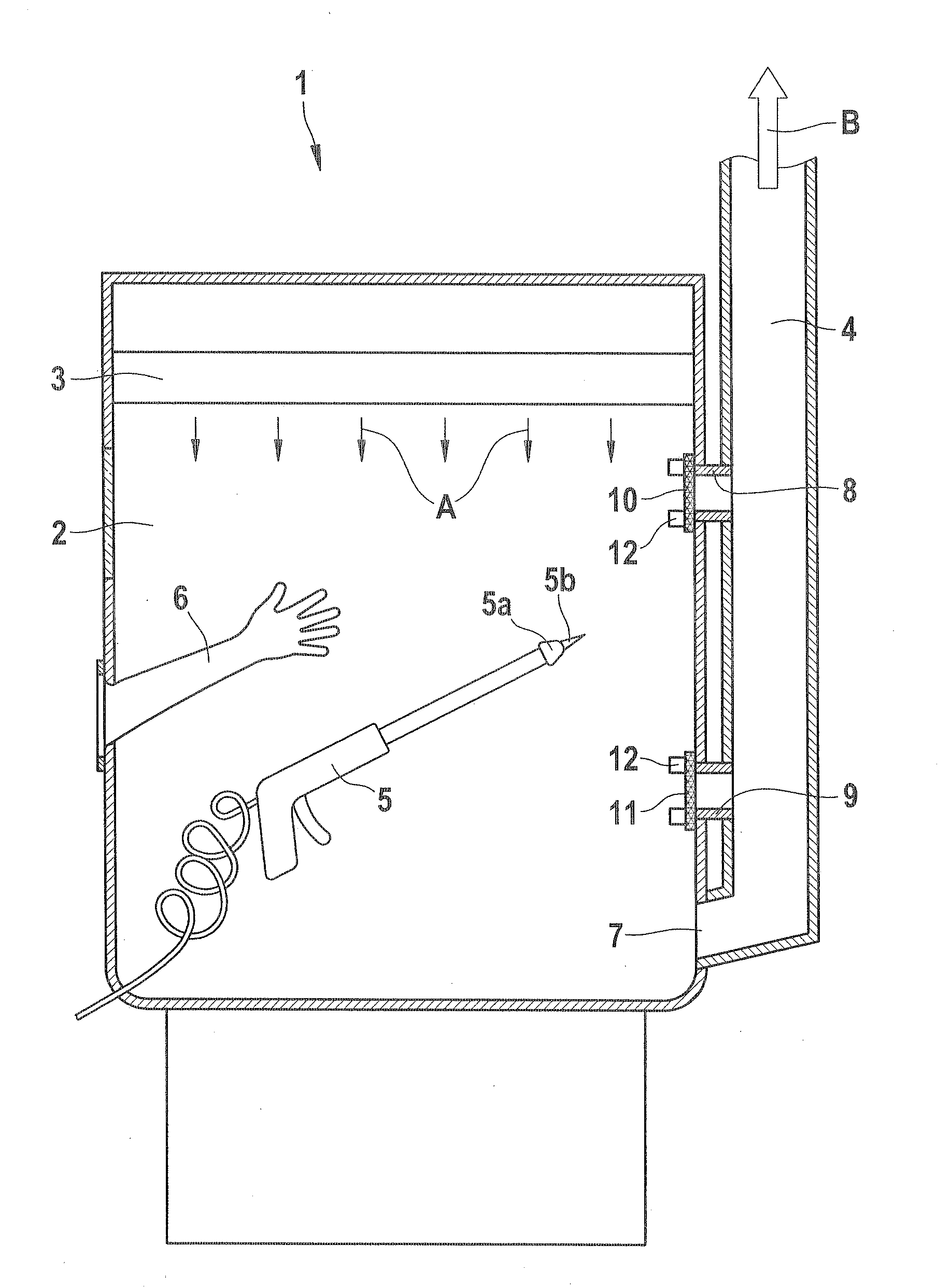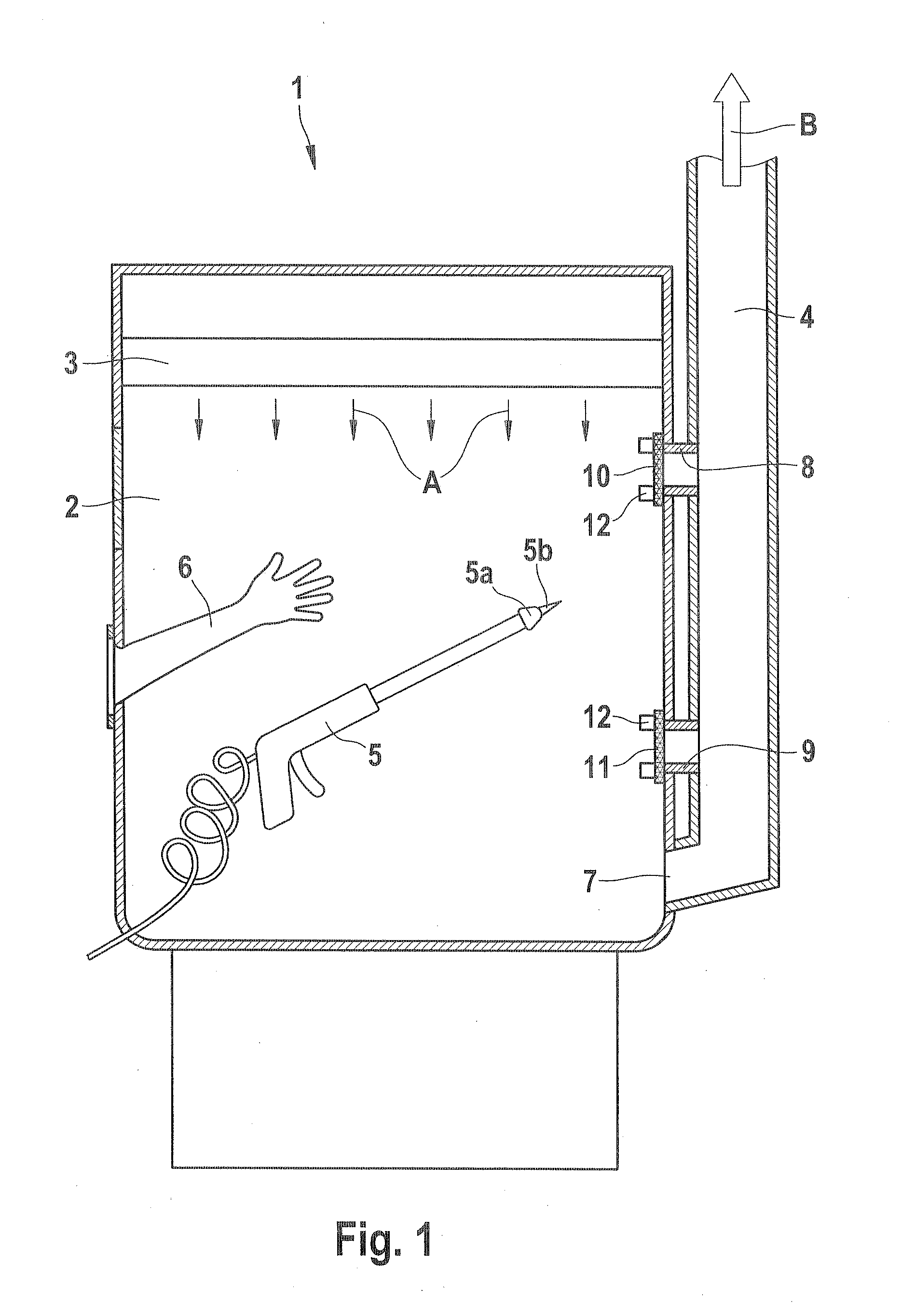Apparatus having a closed-off work chamber with improved cleanability
a technology of work chamber and closed-off work chamber, which is applied in the direction of ventilation systems, heating types, and domestic stoves or ranges. it can solve the problems of return air conduit cleaning, insufficient cleaning of isolator, and inability to reach the internal regions of spray devices, etc., to achieve safe and effective cleaning, simple and fast replacement of membranes, and quick and simple cleaning.
- Summary
- Abstract
- Description
- Claims
- Application Information
AI Technical Summary
Benefits of technology
Problems solved by technology
Method used
Image
Examples
Embodiment Construction
[0015]Below, in conjunction with FIG. 1, an apparatus (isolator) with a closed-off work chamber 2 will be described in detail.
[0016]As can be seen from FIG. 1, the apparatus 1 includes a closed-off work chamber 2, in which a toxic medium, for instance, is put into containers. The apparatus 1 includes a ventilating device 3, which assures that a particle-free laminar air stream is passed through the work chamber 2. This is indicated in FIG. 1 by the small arrows A. The apparatus 1 further includes a return air conduit 4, which communicates with the work chamber 2 via an outlet opening 7. Via the outlet opening 7, the air flows out of the work chamber 2 into the return air conduit 4 and from there, via a filter, not shown, it flows back out of the apparatus 1 again. This is indicated in FIG. 1 by the arrow B.
[0017]The apparatus 1 further includes a spray gun 5, which serves to clean both the work chamber 2 and the return air conduit 4. The spray gun 5 is operated from outside the appa...
PUM
 Login to View More
Login to View More Abstract
Description
Claims
Application Information
 Login to View More
Login to View More - R&D
- Intellectual Property
- Life Sciences
- Materials
- Tech Scout
- Unparalleled Data Quality
- Higher Quality Content
- 60% Fewer Hallucinations
Browse by: Latest US Patents, China's latest patents, Technical Efficacy Thesaurus, Application Domain, Technology Topic, Popular Technical Reports.
© 2025 PatSnap. All rights reserved.Legal|Privacy policy|Modern Slavery Act Transparency Statement|Sitemap|About US| Contact US: help@patsnap.com


